April 1, 2019
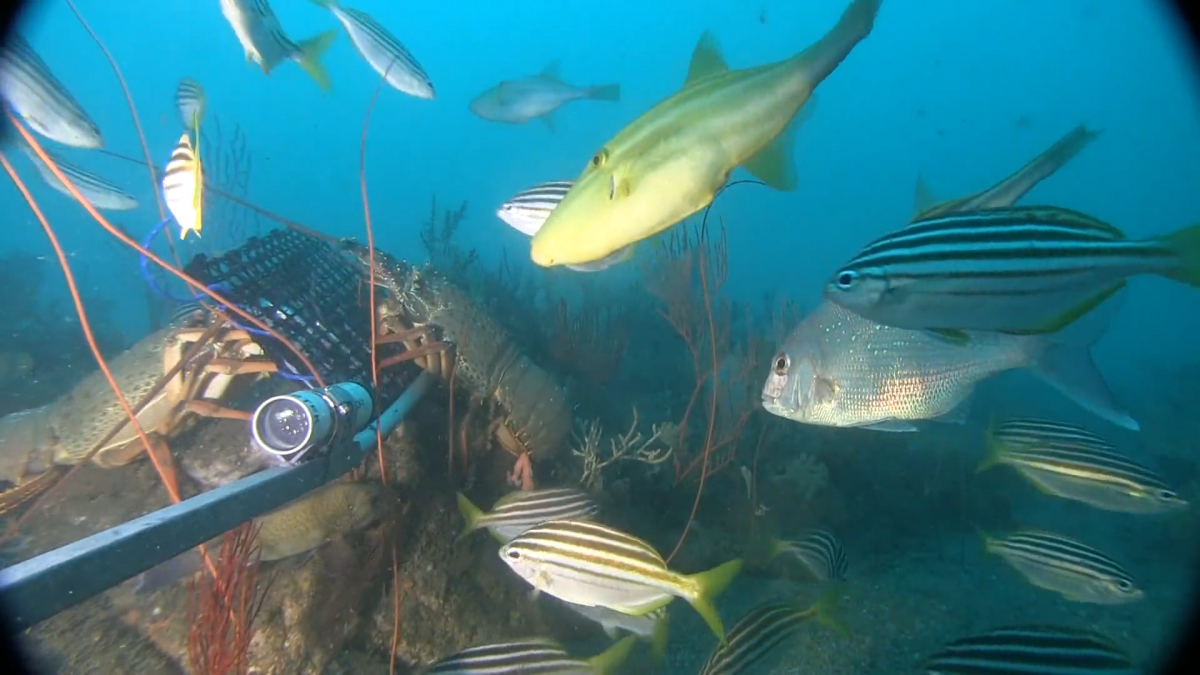
A study of fish communities on mesophotic reefs has found these habitats deserve greater consideration in marine park zoning and fishery management.
Fishes in the Port Stephens-Great Lakes and Hunter marine parks off New South Wales are spoilt for choice when it comes to choosing a rocky reef to dine out on. Extensive expanses of reef occur in this area ranging in depth from the intertidal zone through to mesophotic zone, and possibly deeper.
The shallower reefs (20–40 m) are frequently visited by fishers and scuba divers, so their fish communities are well understood. As you descend into the dim and distant mesophotic zone, however, things are more of a mystery. Relatively little is known about the fishes that favour the reefs between 80–120 metre depths.
In August–November 2016, Joel Williams and David Harasti, and Argonauts (aka technical officers) Roger Laird, Brett Louden and Tom Davis from NSW Primary Industries Fisheries spent 12 days hovering above these temperate reefs.
To learn more about the make-up of fish communities at different depths, they deployed Baited Remote Underwater stereo-Videos (BRUVs) from their vessel Argo. They completed a total of 64 drops on temperate shallow reefs and 43 drops on temperate mesophotic reefs.
Back in the lab, Dr Williams and Dr Harasti spent 150 hours analysing the video and now have an unsurpassed knowledge of how these communities differ. Their findings, published last month in PLOS ONE, will guide future decisions about managing and monitoring these different reef habitats.
Lost refuge
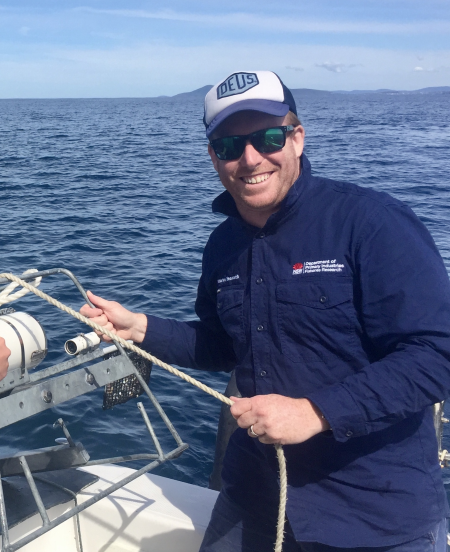
“Mesophotic reefs exist around the world and can be stepping stones from shallow reefs to deeper waters, or ‘islands’ of unique species groups,” Dr Williams says.
“Being remote from most of the stresses that affect inshore shallow reefs – such as coral bleaching, pollution, habitat loss and some forms of fishing – they have been thought to provide refuge for some species of fish.
“But deep rocky reefs across the continental shelf are still subject to commercial fishing and more recently there as been an interest in fishing these areas from recreational fishers, as increased knowledge and technological improvements enable them to target deeper waters.
“In light of these pressures, it is important that we better understand the abundance and diversity of fishes on mesophotic reefs, particularly in marine parks where we’re conserving the biological diversity of different ocean habitats.
“Fortunately we also have access to new technologies. To choose our survey sites, we used high-resolution acoustic maps and advanced camera housings, lights and study designs have made BRUVs a cost effective sampling tool in deeper waters.”
The depth of difference
In 54 hours of ‘reef watch’ Dr Williams and Dr Harasti recorded a total of 7368 fish representing 96 species and 53 families. Approximately 33 of these species were recorded at both depths while the remainder were only found in one zone. Fish assemblages on lower mesophotic rocky reefs were distinct from those on nearby shallow rocky reefs.
Species richness (the number of fish species) on shallow reefs was nearly double that of mesophotic reefs. Shallow reefs had 79 species, 49 of which were unique. Mesophotic reefs had 47 species, with 17 unique.
Southern Maori Wrasse (Ophthalmolepis lineolatus) and Crimsonband Wrasse (Notolabrus gymnogenis) were only present on shallow reefs, recorded in 100% and 94% of deployments, respectively. Both species are carnivores and grow to less than 50 cm. Shallow, kelp covered reefs make good hunting grounds for meals of amphipods and other crustaceans, worms, molluscs and sea urchins.
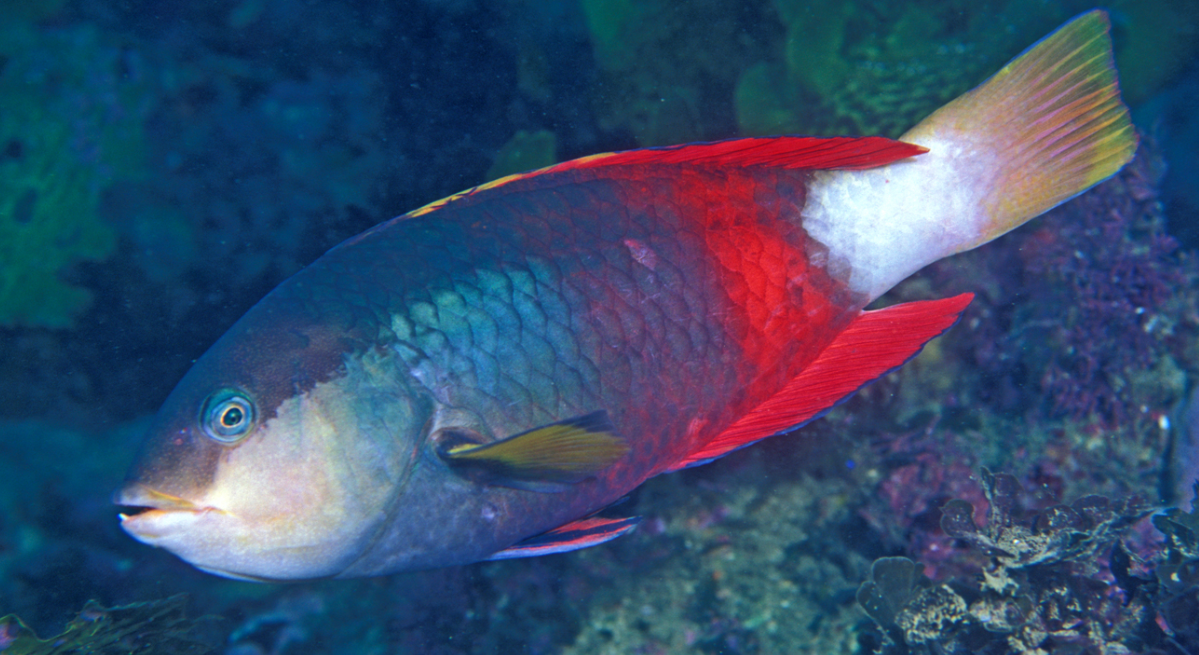
In contrast, frequently encountered residents on the mesophotic reefs were Eastern Nannygai (Centroberyx affinis) 74% of deployments), Blue Morwong (Nemadactylus douglasii) 72% and Yellowtail Scad (Trachurus novaezelandiae) 60%.
There were also schooling species of fish unique to each depth category: the omnivorous Australian Mado (Atypichthys strigatus) on shallow reefs and Eastern Nannygai, on mesophotic reefs.
“The community of fish you’re likely to encounter in any part of the ocean depends on the nature of the local habitat. Depth is a big factor because habitats changes as light availability and water temperature drop,” Dr Williams says.
“Temperate shallower reefs are dominated by macroalgae but below 30 m this starts to change and sessile invertebrates such as sponges and octocorals start to dominate as they don’t depend on light. Algae is a primary food source for herbivorous and omnivorous fishes so these species are more likely to occur in shallow waters. This increased availability of food also increases overall species richness and abundance.
“At mesophotic depths, we’re more likely to see carnivorous, planktivorous, and scavenger fish, and species with greater tolerances to ocean currents and temperature gradients.”
Dim the lights down low
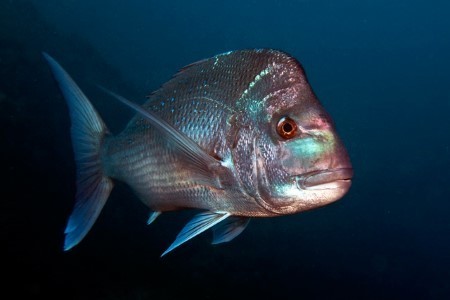
While shallow reefs had a greater richness and abundance of overall fish species, the spread of species targeted by fishers, such as Pink Snapper (Chrysophrys auratus) and Blue Morwong (Nemadactylus douglassi), was quite even. However, the individual distribution of these species was highly variable.
“Snapper were twice as abundant on shallower reefs but our data suggested they were, on average, larger and more likely to be sexually mature, on the mesophotic reefs,” Dr Williams says.
”This supports the hypothesis that shallow inshore reefs provide important habitat for juvenile Snapper, while deeper mesophotic reef provide additional habitat for the adults.
“This is possibly due to the movement of larger fish to deeper waters as they mature, localised fishing pressure removing larger fish from shallow waters, or a combination of both factors.
“Snapper are known for their small home ranges with strong site fidelity on shallow reefs, but their use of deeper reef habitats warrants further investigation.”
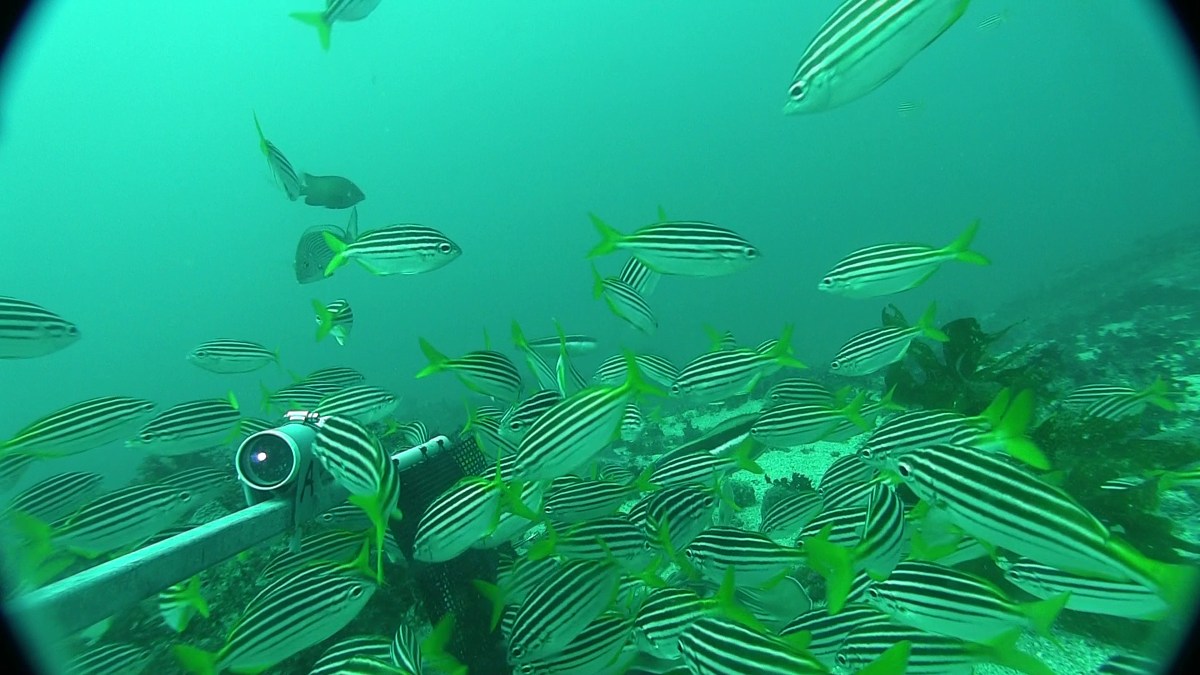
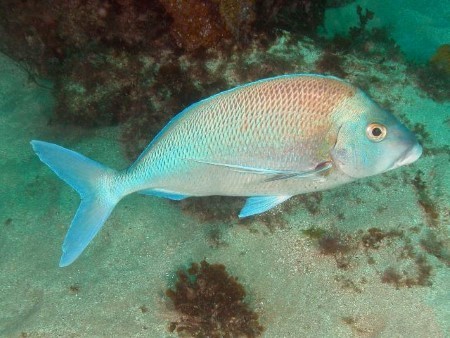
Mapping fishes to habitat
As well as aiding the selection of reefs to sample, acoustic data can be used to generate predictive maps depicting of species richness or species distribution (including target species).
In this study, the research team identified the most useful habitat characteristics for this exercise: these were depth (and associated light availability) and habitat type, particularly reef slope and rugosity (surface roughness).
For example, sites dominated by urchin barrens and sediment habitats were found to have high numbers of Mado and Yellowtail Scad, schooling species that were otherwise found to commonly occur in shallow reefs.
Reef dominated by algae and reef-edge habitats had the highest abundance of fishery-targeted species.
Models incorporating depth and habitat type provided the most efficient way to predict the distribution of Snapper (they favoured BRUVs sites at the edge of reefs dominated by invertebrates and sediment, or sediment habitats).
In contrast, Blue Morwong were more evenly distributed across reef type, with latitude and habitat type providing the best model to describe the spatial distribution of this species.
Monitoring and management
This study has clearly demonstrated that reefs at mesophotic depths are important and should be taken more into consideration by both fishery managers and when zoning marine parks.
In Hunter Marine Park, shelf rocky reef habitats are recognised as a key natural value. For marine park managers at Parks Australia, the opportunity to learn more about their extent and associated fish communities is invaluable.
“We have extended knowledge of temperate mesophotic reefs to support- decision-making in these two marine parks and improve effective management of these reefs and design better targeted monitoring programs,” Dr Williams says.
“Despite more than double the total abundances, there were similar relative abundances of fishery target species across both shallow and mesophotic reefs suggesting that, from a fisheries management perspective, these reef systems have the potential for similar social and economic values.”
Dr Williams says there is still a need to investigate seasonal patterns and fine-scale intra-reef variability in fish assemblages on these temperate mesophotic reefs.
“The Eastern Australian Current has the greatest influence on the oceanography and connectivity of deeper reefs, and has the potential to influence biodiversity, abundance of fishery targeted species and species of conservation significance, but most knowledge on the changing current is based on surface waters,” he says.
“The use of a complementary method, such as remotely operate vehicle or towed video that passively samples the fish assemblages would provide valuable information on the species not captured through the use of stereo-BRUV sampling.”
Further reading
- Log in to post comments
